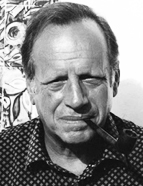

Let us return, however, to Hospital das Letras: opening section I, we find a chapter from the 1951 degree thesis on Sá de Miranda, followed by texts on the Baroque poet Francisco de Vasconcelos and João Xavier de Matos (both from 1964), and another on Bocage (1965). Section II brings together two highly notable articles from 1962 and 1955 on Garrett, and, under the title “Notes on Cesário Verde”, there are five articles, from 1955, 1954, 1949, 1967 and 1955 – all of them essential critical pieces, with the 1949 article (“Da cidade para o campo” [From the city to the countryside]) being central to the bibliography on the poet of “Cristalizações” [Crystallisations]. If we consider the age of the essayist at the time of publication of these articles, which are now considered classics, his place in the pantheon of Portuguese literature, also as a literary critic, becomes even greater. In addition to those already mentioned, this volume includes essays on Orpheu , Pessoa and Sá-Carneiro, dating from the 1960s. One of these constitutes another cornerstone of the author’s critical career: “Ícaro e Dédalo: Mário de Sá-Carneiro e Fernando Pessoa” [Icharus and Dedalus: Mário de Sá-Carneiro and Fernando Pessoa] (published in Colóquio in 1964), the text of a “lecture given at the D. Maria II National Theatre (...), during one of the Poetic Afternoons organised by Amélia Rey-Colaço and Natércia Freire” in February 1963 (p. 218). , this text from 1963 was decisive for the critique of Modernism and for the relationship between Pessoa and Sá-Carneiro, mirroring another text that David would publish in issue 117-118 of Colóquio-Letras , in 1990, dedicated to the centenary of Mário de Sá-Carneiro: “O voo de Ícaro a partir de Cesário” [The flight of Icharus from Cesário] (pp. 204-212). This dual aspect of David’s studies on Sá-Carneiro reveals, on the one hand, his characteristic tendency to return to topics and authors who serve as his guiding light and, on the other, the renewal he always had in mind for his own career as an essayist, highlighting here, twenty-seven years on, what is common to his work in this field: nothing ages, everything is renewed and deepened, in a critical continuum in which the reader is confronted with the evidence of an unblemished rigour in the texts of the 1960s as in those he wrote at the dawn of the 1990s. In the same section of Hospital das Letras [Hospital of the Letters] there are two other articles, also from the mid-1960s and equally relevant, on Almada Negreiros, an author to whom he would return on other occasions, and two studies on the Brazilians Cecília Meireles (1975) and Vinícius de Moraes (1956) – in one of the sections of the latter there is a “Parallel with Verlaine – Poetry and phonetics’ (pp.
This work is financed by national funds through FCT - Foundation for Science and Technology, I.P, in the scope of the projects UIDB/04311/2020 and UIDP/04311/2020.
